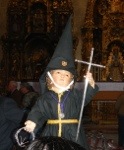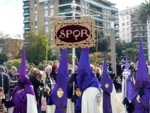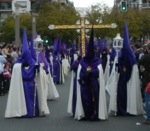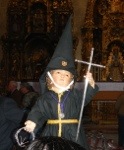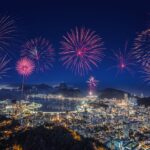Holy Week in Seville (Spanish: Semana Santa de Sevilla) is one of the most important traditional events of the city and also the most important Holy Week in Spain. It is celebrated in the week leading up to Easter (Holy Week among Christians), and is one of the better known religious events within Spain. This week features the procession of pasos, floats of lifelike wooden sculptures of individual scenes of the events of the Passion, or images of the Virgin Mary showing restrained grief for the torture and killing of her Son. Some of the sculptures are of great antiquity and are considered artistic masterpieces, as well as being culturally and spiritually important to the local Catholic population.
During Holy Week, the city is crowded with residents and visitors, drawn by the spectacle and atmosphere. The impact is particularly strong for the Catholic community.
The processions are organized by hermandades and cofradías, religious brotherhoods. During the processions, members precede the pasos (of which there are up to three in each procession) dressed in penitential robes, and, with few exceptions, hoods. They may also be accompanied by brass bands.
The processions work along a designated route from their home churches and chapels to the Cathedral, usually via a central viewing area and back. The ones from the suburban barrios may take 14 hours to return to their home churches.
The processions continue from Palm Sunday to Easter Sunday morning. The climax of the week is the night of Holy Thursday, when the most popular processions set out to arrive at the Cathedral on the dawn of Good Friday, known as the madrugá.
